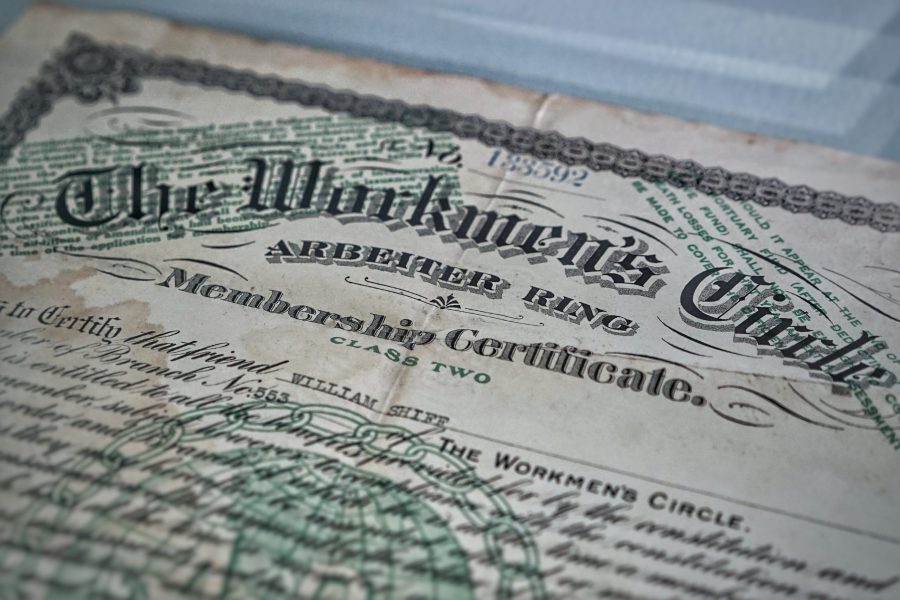Labor unionization seeks to level the inherent power imbalance between employer and employee. Companies like Amazon show their hand when they launch aggressive anti-union campaigns, they understand the power the labor movement holds.
The federal minimum wage in the United States of America is $7.25 an hour. Costs of living and state minimum wage laws vary across the country, but a study of the U.S. Department of Housing and Urban Development Data demonstrated that the cost of living isn’t low enough anywhere.
Rosenfeld, for GoBankingRates, reported that nowhere in the U.S. can a minimum wage worker afford rent on their own single bedroom or studio apartment. Even if they share their space with a roommate – there are only 15 states where two people making minimum wage can afford to live in a two bedroom apartment.
A number of studies sought to understand and quantify the link between job satisfaction and life satisfaction. A study published to the National Library of Medicine explores many hypotheses that seek to explain the strong correlation between how satisfied individuals are with their employment and their lives overall.
“In job settings, a recent meta-analysis (Van den Broeck et al., 2016), reviewing 99 studies with 119 distinct samples, found that the satisfaction of basic psychological needs at work is significantly associated with higher well-being (e.g., life satisfaction)”
Full time employment dominates at least forty waking hours each week. People clamor for basic respect at their workplaces and to make a wage that allows them to at least be housed and to eat.
Labor laws exist to protect workers, but employers wield inordinate power.
If any single employee attempts to negotiate something they need: less dangerous work, to receive more training, to receive better healthcare benefits, more paid sick leave, or a pay raise their employer can flat out refuse.
Or, even worse, they can be fired for asking.
Labor unions seek to mitigate the inherent power imbalance between the individual worker and their employer.
This article from Teen Vogue succinctly describes a labor union as, “ an organization of workers dedicated to improving wages, hours, and working conditions within their workplace via collective bargaining to secure a union contract.”
The work unions do is paid for by union member’s dues and they negotiate with employers on the union members’ behalf to reach legally binding contracts for terms of employment. Unions such as the Utility Workers Union of America argue that this collective bargaining yields results, citing the fact that: “union workers’ wages are on average 28% higher than their nonunion counterparts.”
For example, the Walsh-Healey Public Contracts Act and the Fair Labor Standards Acts passed in 1936 and 1938 “which mandated a minimum wage, extra pay for overtime work, and basic child labor laws” was advanced by the Department of Labor, a branch of the federal government that was founded on the Federation of Oganized Trades and Labor Unions.
The Clayton Antitrust Act passed in 1914 is the reason why employees can legally strike and boycott their employers.
It’s difficult to truly fathom the number of people that have been involved in the U.S. labor movement and their lasting impact.
For example, the Uprising of the 20,000 in 1909 involved women garment workers in the thousands demanding the dangers they faced in sweatshops be addressed.
During the United Mine Workers of America strike of 1946, 400,000 coal miners orchestrated a strike to protest the safety and health risks of the mines and low wages.
As recently as 1997, the Teamsters-led UPS Workers Strike, sought to establish greater pension benefits and job security.
With all the benefits unions have secured, why are they controversial?
Some features of unions can be a double-edged sword. People often point to union dues, for people who are already living paycheck to paycheck, and closed union cultures as drawbacks of unionization.
Amelia Josephson for SmartAsset cites the most common reservation about unions: “they can drive up costs and lead to an adversarial relationship between labor and management.”
The argument has also been made that union dues are unfair – particularly for workers who are protected under union contract but are not members:
“Unions in 22 states are allowed to collect fair-share fees from public sector employees who have not joined their union to cover the costs of representation and collective bargaining in lieu of full union dues”
Fair share-fees are a flat rate fee that is deducted from non-union members paychecks and is set by union leadership.
At a fully unionized business, all workers are protected under union contract,but each person is allowed to choose if they want to join the union and pay membership dues.
Kim Kelly for Teen Vogue argues that their right-to-work laws heavily weaken unions:
“Right-to-work laws make it legal for workers at unionized shops to opt out of joining the union and paying union fees. However, they still benefit from the union’s collective bargaining agreement, without paying dues — thereby depriving the union of income and weakening their potential influence“
Labor unions are a common thread through the history of America’s capitalist economy; yet; their influence has ebbed and flowed, “In 1979, the number of union members reached a peak of 21 million.”
But union membership has “fallen since 1983, when 20% of American workers were union members. In 2021 10.3% of U.S. workers were in a union.”
Unions are meant to protect and empower workers but union membership is less common than it was forty years ago. With data from the Pew Research Center Ted Van Green highlighted that the majority of the country does not view this decrease favorably:
“In the survey, 58% of U.S. adults say the large reduction over the past several decades in the percentage of workers who are represented by unions has been somewhat or very bad for the country, while 61% say this has been bad for working people.”
At corporations that employ hundreds of thousands of workers, each individual worker is very small and often very replaceable.
Many of these companies also continue to turn huge margins of profit, unperturbed by the countless proven instances of labor law violations and exploitation of workers. Amazon is a prime example of this abuse.
Michael Sainato for The Guardian explained that at an Amazon warehouse in New York, employees drafted a petition to include working conditions.
One issue they cited was that in their two allotted fifteen minute breaks there was barely enough time to walk from the warehouse to the break room and back.
CNBC reported that “Amazon warehouse workers in the U.S. suffered serious injuries at twice the rate of rival companies in 2021, according to a new study.”
A worker rights platform, Organize, also conducted a survey in 2019 that found of Amazon workers: “74 percent avoid using the toilet for fear of being warned they had missed their target numbers.”
If Amazon workers unionize — what does Amazon stand to lose?
For one, if they negotiated safer working conditions which would include giving workers more time to fill packages, it would result in higher operational costs. Even more expensive, if unions were able to negotiate higher wages for all their workers Amazon would lose a fortune in profits.
Amazon employs 1.1 million people in the United States. If every single one of those people negotiated just a dollar raise, Amazon would lose 1.1 million dollars every single hour of every single day of business operations.
Workers risk their jobs in unionizing, the life or death nature of that risk cannot be overstated but by the sheer numbers corporations and business owners stand to lose the most.
From the Washington Post Nitasha Tiku highlights the lengths Amazon and other tech companies are willing to go.
“Tech companies have surveilled workers suspected of organizing, posted anti-union propaganda and hired anti-union consultants, according to interviews with workers and organizers. They’ve also forced workers to attend “captive audience” meetings to undermine union talking points, lobbied for laws that will prevent workers from getting the right to unionize and fired employees who drew attention to these tactics.”
Companies that make billions of dollars in profits, and stand to lose a fraction of those profits have a lot of resources to undermine unionization.
When powerful people have so much to lose in this fight, there is great risk to the worker. There are countless instances of retaliation and the laws that are meant to protect average people in theory do not always do so in practice.
Change in any form carries risk. Workers who are skeptical or outright against unionization have very reasonable worries. What companies like Amazon stand to lose, workers have to gain.
Photo by Robert Anasch on Unsplash.














Leo • Jun 3, 2022 at 2:55 am
All your works of yours are actually so very beautiful because they actually share so much knowledge with everyone present here. Thankfulness for the manner in which you actually do this.
Best regards, writer from https://paperhelp.nyc/ service.